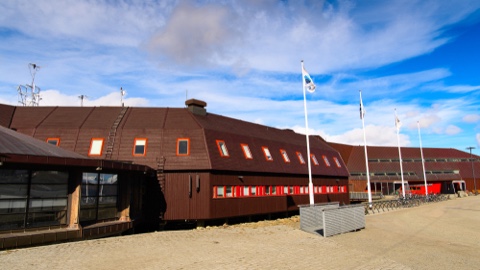
Researchers at the University Center in Svalbard (UNIS), Norway are working with 3D printing and low-cost parts to create an inexpensive hyperspectral imager that is lightweight enough to use onboard drones. Hyperspectral imagers produce images like a traditional color camera but detect several hundred colors instead of the three detected by normal cameras. Traditionally, they can cost tens of thousands of dollars and are very bulky and heavy. University Center researchers have been able to create visible-wavelength hyperspectral imagers weighing less than half a pound (one quarter of a kilo) for as little $700.
“The instruments we made can be used very effectively on a drone or unmanned vehicle to acquire spectral images,” said research team leader Fred Sigernes. “This means that hyperspectral imaging could be used to map large areas of terrain, for example, without the need to hire a plane or helicopter to carry an expensive and large instrument.”
The key to the successful production of the imagers is 3D printing. Several prototypes were made to create plastic holders that precisely position small, lightweight commercially available cameras and optical components.
“Making items in metal is time consuming and can be very expensive,” said Sigernes. “However, 3D printing with plastic is inexpensive and very effective for making even complex parts, such as the piece needed to hold the grating that disperses the light. I was able to print several versions and try them out.”
Although the new imagers don’t provide the sensitivity of traditional hyperspectral imagers, their performance is sufficient for many purposes. Sigernes and his team are now working to improve sensitivity by making slightly larger versions of the instruments that would still be small and light enough for use on drones. Improving the sensitivity of the imagers will provide higher quality data.
“There are many ways to use data acquired by hyperspectral imagers,” said Sigernes. “By lowering the cost of these instruments, we hope that more people will be able to use this analytical technique and develop it further.”
